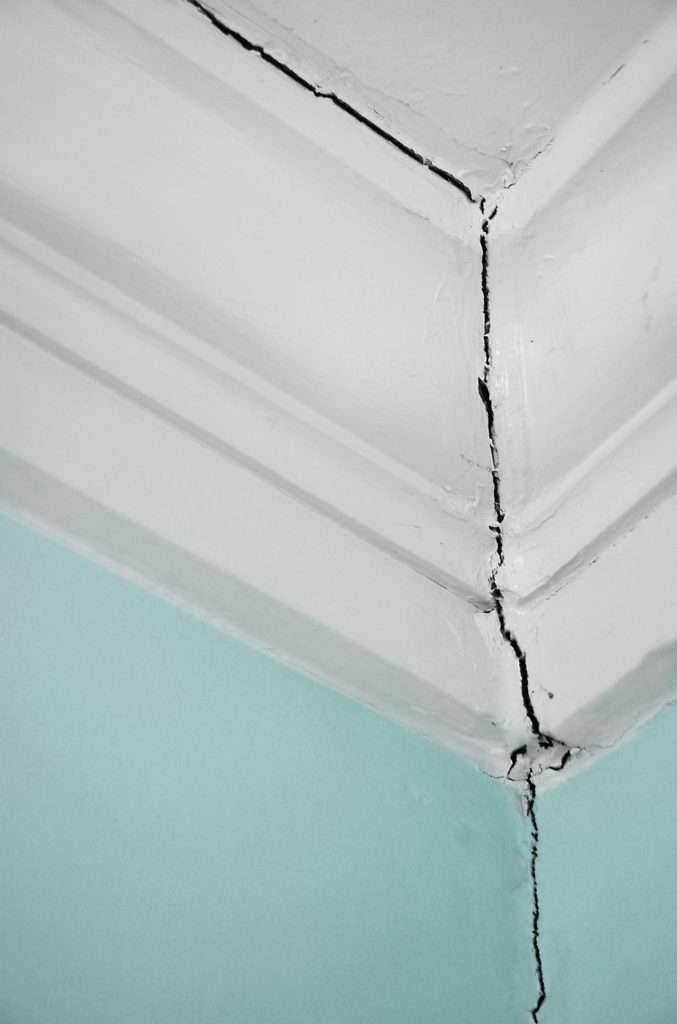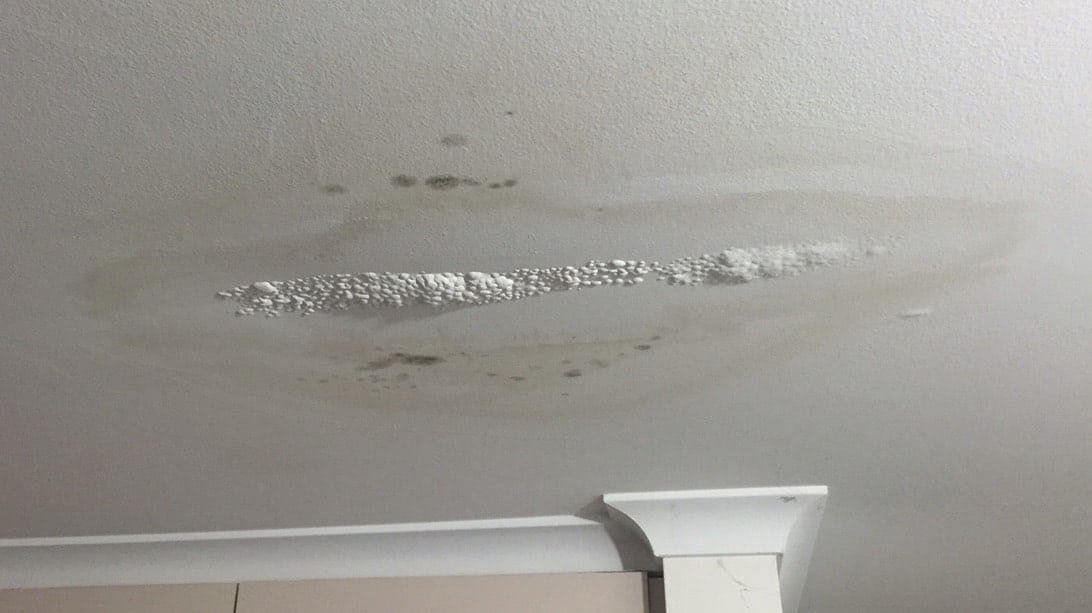A crack that is an 1 8 inch wide and only two feet long in a corner will not be given as much weight as a ceiling with 1 4 inch wide cracks three or five feet long and that appear in a number of locations.
Roof leaked and niw my ceiling plaster is cracked.
It can be seasonal shrinkage.
Using a medium bristle brush scrub the area with a solution of water and tri sodium phosphate tsp or a non phosphate detergent.
5 mix setting type joint compound and apply it over the tape and groove.
How to know when ceiling cracks are structural or just old.
The plaster ceiling in my 1949 home sustained water damage from a roof leak discoloration bulging flaking falling etc.
That was a year and half ago.
Another sign of a water damaged ceiling is swelling or bubbling.
Discoloration sagging drywall or buckling plaster and dripping water from your ceiling might make you think that the ceiling itself is leaking in reality water coming from the ceiling is a symptom of some other home system that is actually leaking.
When the ceiling looks like it is bulging out it means there is an accumulation of moisture into the wood and drywall.
Roof leaking from heavy rains toilet overflowing from upstairs bathroom pipes leaking and condensation line leaking are a few causes.
The roofing system or the.
Age of the house.
4 dip a sponge in clean water and dampen the area of the repair.
As a building becomes older the tiny cracks caused by the continual onslaught of different forces on the house combine and magnify and eventually become visible.
When a ceiling shows signs of water damage and dripping water the place to look is in one of two home systems.
2 blow out the plaster dust.
Typically plaster ceiling cracks have two causes.
I d say the area was about 3 square feet.
3 cut short pieces of self adhesive fiberglass mesh joint tape and cover the groove with them.
If you live in a home with plaster ceilings and you begin to see cracks they may be caused by moisture and or movement.
Because wood is flexible and plaster is not you will have cracks form in the ceiling following the join lines of the plasterboard sheets.
The drywall itself may also be spongy and it may sag.
House settling and temperature or moisture fluctuations in an attic which result in the expansion or contraction of framing members.
Cracks that develop quickly may be warning you about a leak in an upstairs plumbing fixture or in the roof.
Ceiling cracks become more of a red flag if there are other signs that the house may have movement or structural problems.
Ceiling cracks in plaster ceilings.
If they are bigger and sections of plaster are falling you will probably have to remove the plaster and replace it with a drywall section.
Small cracks can be repaired by applying plaster.




























